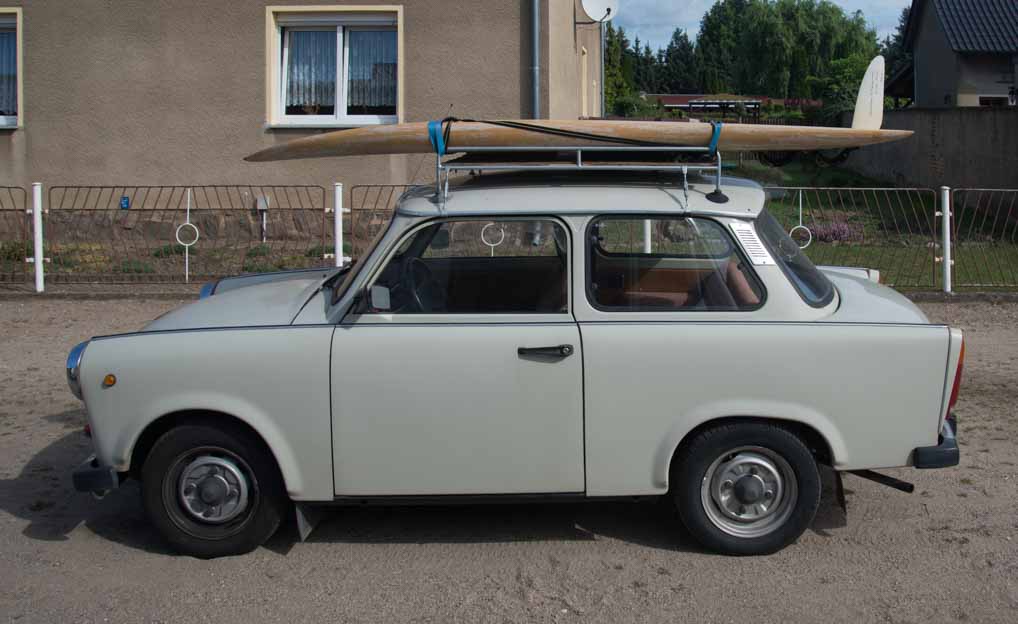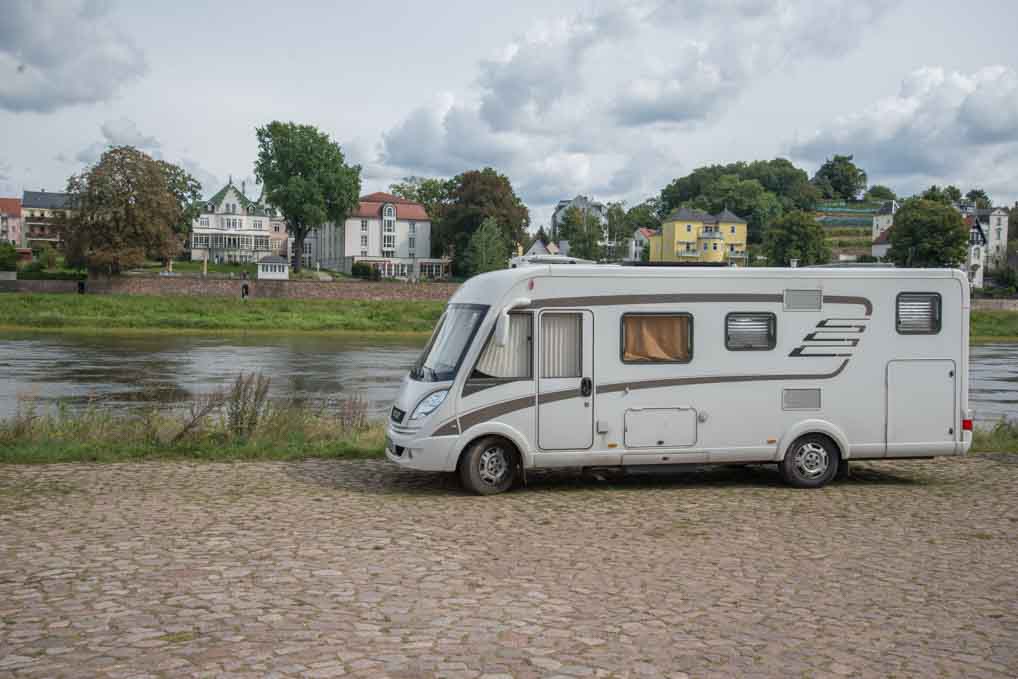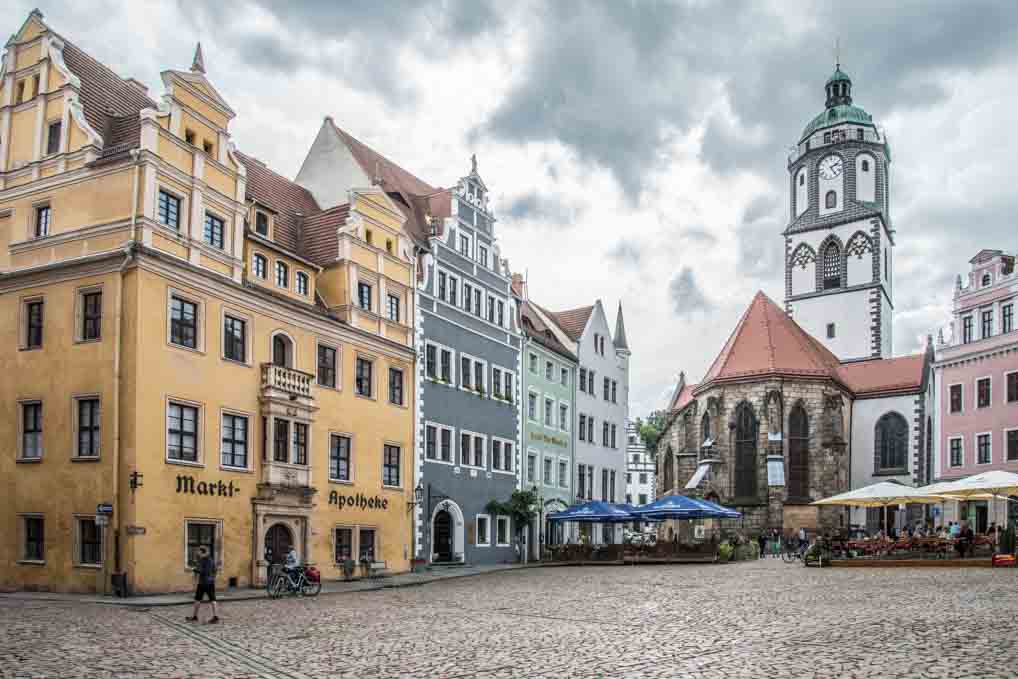Today’s journey was entirely cross country, for the most part following the path of the River Elbe from Wittenberg to Meissen.
We have seen quite a few of the once ubiquitous East German Trabant car. Several of them, I have noticed, have been driven by bearded young men. I suspect they are a hipster must have in this part of Germany. As we went through a village early on today, we saw a Trabant with a surf board on the roof. Given that we must be 500 miles from the sea my hipster connection was confirmed.

Trabant
The roads today were generally much better although many villages have left their old cobbles in place, which is a good idea from their point of view, because it is then impossible to travel at more than 20 miles per hour. The villages in this part of Germany are often extremely close to each other. Many times we exited a village, sped up to 60 mph and then within one or two kilometres we hit another village and had to slow right down. It meant 70 miles took us over two hours.
Today is Sunday and the feel of the country is completely different from the UK and some other countries. All the major shops and supermarkets are closed, without exception. Even small shops all appear to be shut. Restaurants and bars seem to be unaffected.
I have begun to notice a certain modesty from Germans about their language abilities. Many times in the last week I have asked someone if they speak English only to be told that they don’t or they only speak a bit. When they then hear me mangling their beloved German they frequently display a very good grasp of English.
When we arrived in Meissen we first headed to the Stellplatz in the centre of town, on the banks of the river Elbe (51.167855, 13.473687). There were a couple of places left right on the river bank, so we grabbed one with our habitation door facing the river. There are no services but at only €5 for 24 hours it is perfect.

Basil in a perfect spot for the night
The name Meissen will be well known to anyone with even a passing interest in antiques. It was the location of the first producer of porcelain in Europe and was renowned for the quality of its products.

Meissen
They still make porcelain here, but that was not the reason for our visit. Instead we were keen to have a wander around yet another beautiful German old town and we were not disappointed. The old town is set around the base of a rocky outcrop, on top of which sit a palace cum castle and the town’s cathedral. I suppose because it has a cathedral it is probably strictly speaking a city, but today it only has a population of about 30,000.

Town Square
The Rough Guide advises that it is a town with no particular major sites, but which you should just explore, which is what we did. We started downhill in the old market place, ambled around the lovely cobbled old streets and eventually worked our way up the steep hill to see the cathedral and the palace.

Town Hall
It is yet again a lovely old town, pretty much as nice as any town you will find in Europe. There is barely a modern structure to be seen anywhere in the centre and there is a plethora of lovely renaissance buildings. I suspect in high season it may be very crowded, but at this time of year it was pretty quiet.

The Cathedral
I am puzzled as to how Germany has managed to retain so many towns with fantastic old centres and prevented their demolition and replacement with modern buildings, as has happened in nearly all of Britains old market towns. Perhaps Germany has stricter planning regulations or maybe Germans simply have a greater appreciation for their history.

Meissen have kindly provided some water so that Mabel can relieve her thirst.
We searched out a small restaurant recommended in the Rough Guide, where I think we will eat tonight. The only doubt in my mind is that on the way back to Basil Sarah and I saw an Indian Restaurant, and you may have gathered from other posts, we love an Indian meal, whenever we get the opportunity. Time will tell.
